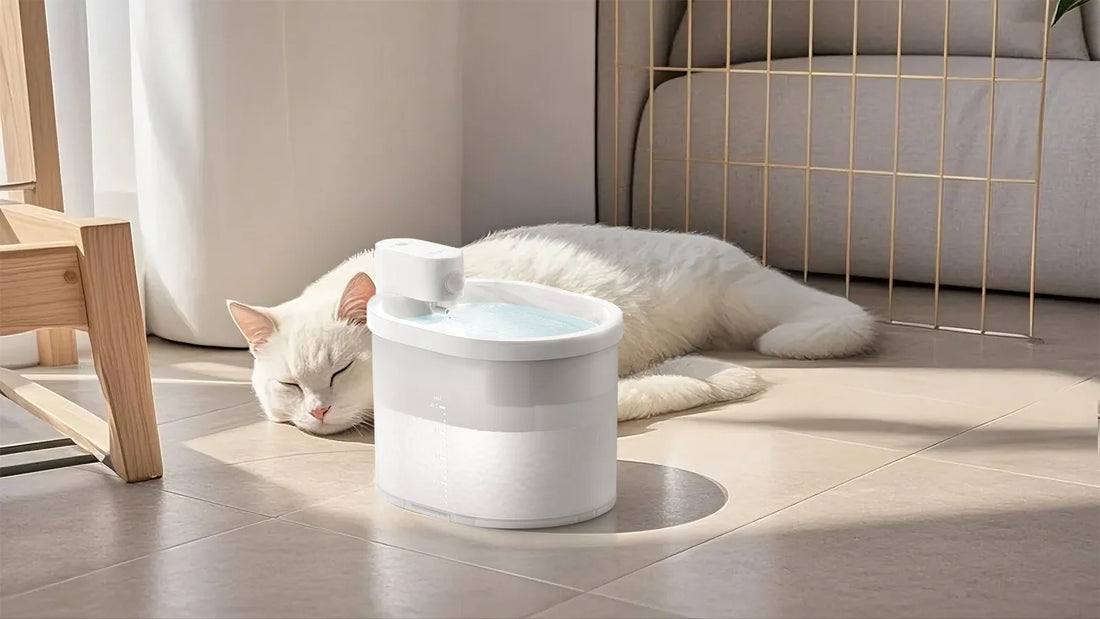Encouraging your cat to use a water fountain can be a game-changer for their hydration and overall health. Cats are naturally drawn to running water, but transitioning them from a traditional bowl to a fountain requires patience and the right approach. This guide will walk you through practical steps to make the switch seamless and enjoyable for your feline friend.
Understanding Why Cats Prefer Running Water
Cats have an instinctive preference for running water due to their wild ancestors, who relied on streams and rivers for hydration. Stagnant water in bowls may not appeal to them as much as the fresh, flowing water from a fountain. Additionally, running water is often cooler and more oxygenated, making it more enticing for your cat.
Choosing the Right Water Fountain
Selecting the right fountain is crucial for encouraging your cat to use it. Look for a fountain that is quiet, easy to clean, and made from safe materials. Cats are sensitive to noise, so a quiet fountain will be more appealing. Ensure the fountain has a gentle flow of water, as a strong current might intimidate your cat.
Introducing the Fountain Gradually
Start by placing the fountain in a familiar area where your cat spends a lot of time. Keep their old water bowl nearby initially, so they can explore the fountain at their own pace. Gradually move the bowl closer to the fountain over a few days, allowing your cat to associate the fountain with their drinking routine.
Making the Fountain Appealing
To make the fountain more attractive, consider adding a few drops of low-sodium chicken broth or tuna water to the fountain. This will entice your cat to investigate and drink from it. Ensure the additives are safe and do not contain any harmful ingredients.
Encouraging Play Around the Fountain
Use toys or treats to encourage your cat to interact with the fountain. Place treats near the fountain or use a toy to guide them toward it. Positive reinforcement, such as praise or treats, when they drink from the fountain will help them associate it with a rewarding experience.
Maintaining the Fountain
Regular cleaning and maintenance of the fountain are essential to keep it appealing to your cat. Stagnant or dirty water can deter them from using it. Follow the manufacturer’s instructions for cleaning and replacing filters to ensure the water remains fresh and clean.
Monitoring Your Cat’s Hydration
Keep an eye on your cat’s water intake to ensure they are staying hydrated. Signs of dehydration include lethargy, dry gums, and reduced skin elasticity. If you notice any of these signs, consult your veterinarian immediately.
Patience is Key
Transitioning your cat to a water fountain may take time, and each cat is different. Be patient and consistent with your approach. Avoid forcing your cat to use the fountain, as this can create a negative association. Instead, let them explore and adapt at their own pace.
Creating a Stress-Free Environment
Ensure the area around the fountain is calm and free from distractions. Cats are more likely to use the fountain if they feel safe and relaxed. Avoid placing the fountain near loud appliances or in high-traffic areas.
Seeking Professional Advice
If your cat continues to resist the fountain despite your efforts, consider consulting a veterinarian or a feline behaviorist. They can provide personalized advice and rule out any underlying health issues that might be affecting your cat’s behavior.
Encouraging your cat to use a water fountain can significantly improve their hydration and overall well-being. With the right approach and a little patience, you can make this transition smooth and enjoyable for your feline companion. Start today and give your cat the gift of fresh, flowing water!













